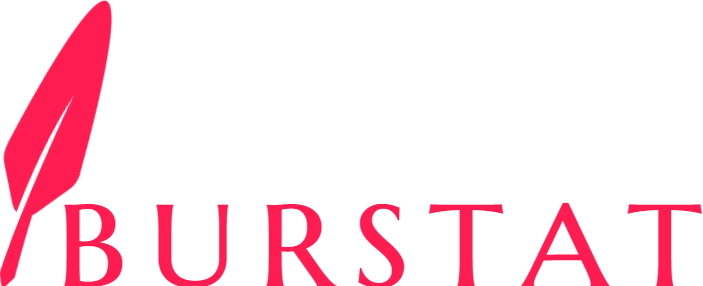Weekly Reports | 10:00 AM
Insurance industry uncertainty likely to persist; worlds costliest cities; employment to grow, albeit slowly
-A setback for general insurers
-Price rises and covid
-A look at the labour markettrends
By Angelique Thakur
Business interrupted
Now that it has become clear the insurance industry cannot wash its hands of covering covid-related business losses, both Macquarie and JP Morgan take a look at the fallout.
But first, a quick recap.
A claim lodged in the Supreme Court of NSW became a test case, with the insurance industry arguing business interruption policies were not mandated to cover the losses from the coronavirus pandemic.
Business interruption policies contain an exclusion clause that exempts them from covering losses due to any quarantinable disease under the Quarantine Act of 1908. Basically, what the industry was looking for was the court to say covid is a quarantinable diseasewhich would imply business losses on account of the pandemic could be excluded.
But the Quarantine Act of 1908 was repealed in 2016 with the Biosecurity Act, 2015 coming into force.The Biosecurity Act refers to “listed human disease”. It was under thisthat covid was added in January 2020 (and not as aquarantinable disease).
The argument of the insurers was any reference to “quarantinable disease” in their policies should be read to mean the same as a “listed human disease” under the Biosecurity Act 2015. Long story short, the court ruled against the insurers and declared that covid is not a quarantinable disease and so cannot be excluded to deny claims.
What does this mean for the insurers?
For starters, JP Morgan makes it clear at the outset this isnt what the broker expected and will most likely lead to higher claims than previously reserved by the likes of Insurance Australia Group ((IAG)) and Suncorp Group ((SUN)).
One obvious implication is the claims costs estimates related to covid business interruption policies will shoot up. While JP Morgan does not believe the total provisions for these claims would double, the verdict does indicate more claims will have to be accepted.
But the worst may not be over.
Both JP Morgan and Macquarie fear there may be more to come in the form of denial of access with the risks stemming from this clause potentially bigger and more costly.
Coming back to the test case, JP Morgan does not expect the industry to back down without a fight and make efforts to deny the business interruption claims since they were not originally meant to be covered (not to mention what such claims would do the insurers financials if allowed unabated).
With respect to which company would be impacted the most, JP Morgan puts the spotlight on IAG. If the insurers were to lose all the business interruption related cases in Australia, Macquarie estimates Insurance Australia Groups pre-tax losses to be closer to -$225m with circa -$200m related to the test case.
Suncorp is next in line. Macquarie notes the group had already provided circa -$195m assuming the insurers would lose the test case.Although Suncorp claims it has enough in provisions, Both Macquarie and JP Morgan thinkthere might still be a risk of losses from other claim gateways such as denial of access etc.
Turning to QBE Insurance ((QBE)), JP Morgan highlights the insurer claims it has substantial reinsurance protection. While unclear on the specifics, JP Morgan believes a significant portion of losses will likely end up with the reinsurers.
JP Morgan notes the insurance sector has been underperforming on the back of uncertainty regarding the business interruption claims and it doesnt look like this uncertainty is going to go away any time soon.Macquarie is more upbeat and believes the losses are manageable and will probably not require any capital raising.
[Yesterday IAG went into a trading halt, pending a capital riaisng.]
Covid-19 and price rise trends
Zurich and Paris have nudged out Singapore and Osaka to join Hong Kong as the worlds three most expensive cities to live in.
In the 2020 cost of living (WCOL) index prepared by The Economist Intelligence Unit (EIU), all three cities Hong Kong, Zurich and Paris – claimed the joint top spot.
It appears the coronavirus is to be blamed for the shuffle, impacting the prices of everyday goodsamong other things.
Singapore witnessed a pandemic-led exodus of foreign workers with the city states overall population contracting for the first time since 2003 and leading to the decline in prices.
Osaka fared no better with covid-19 led stagnation of consumer prices and the Japanese government having to step in to subsidise costs for services like public transport.
The cost of living index covers the prices of 138 good and services in 130 of the worlds major cities.While a rise of just 0.3 points over the last year makes it look like the prices were mostly flat, when looked at from a regional perspective, the results are very different.
Americas, Eastern Europe and Africa saw prices fall over the last year while cities in Western Europe became more expensive.
We have two cities from Europe, Copenhagen and Geneva joining Zurich and Paris as most expensive cities.Two cities from the US (New York and Los Angeles), one from Israel (Tel Aviv) and the rest from Asia Pacific (Singapore and Osaka) make the rest of the top 10 list.
The index noted prices were affected by factors like a demand shift due to the pandemic, supply chain disruptions, currency rate movements and government actions.
Cost of essential products remained resilient while impulse purchase products suffered. Unsurprisingly, items like bottled water and meal preparation kits have gained importance.Cheaper products have become more in vogue with people more price-conscious.
Food and grocery, for the most, remained flat except for pockets like packaged goods prices (including coffee, rice, juice) seeing an increase across most cities.
However, the cost of a typical shopping basket containing your daily food items and beverages (non-alcoholic) fell for 50 cities with Caracas, Rio de Janeiro (Latin America) and Lusaka (Africa) leading the fall.
Unsurprisingly, alcohol prices rosebut it is tobacco that saw the highest year on year price increase amongst the non-durables.
The recreation category noted the steepest increase in prices after tobacco driven by consumer electronics, like personal computers/laptops.This can be explained by the sudden shift to working from home. Interestingly, Wuhan, which is a major electronics manufacturing hub, being put under lockdown also drove the price rise in electronics, EIU notes.
Clothing and footwear suffered, with non-essential stores shut during the lockdowns. Even the shift to online shopping could not help prop up clothing with people delaying major wardrobe changes.
Looking at the biggest movers, Tehran (Iran) noted a big jump of 27 places, mostly driven by the US sanction-led supply chain disruption and consequent inflation. On the other hand, Reykjavik (Iceland) and Rio de Janeiro (Brazil) saw the biggest falls.
Damascus (Syria), Tashkent (Uzbekistan), Lusaka (Zambia) and Caracas (Venezuela) are the cities with the lowest cost of living.
These price trends are expected to continue in 2021 as well. The EIU expects prices to remain under pressure with a return to pre-pandemic levels possible only in 2022.
A case of celebrating too early?
Come 2021, global employment is expected to expand. Not only that but expand at a healthy rate so that by the end of 2022, jobs will have reached their pre-crisis peak levels.
This is the conclusion of a study of the labour markets in advanced economies conducted by a team of Oxford Economics analysts. However, more than the future, it is what is happening now that has the economists scratching their heads.
The full story is for FNArena subscribers only. To read the full story plus enjoy a free two-week trial to our service SIGN UP HERE
If you already had your free trial, why not join as a paying subscriber? CLICK HERE






